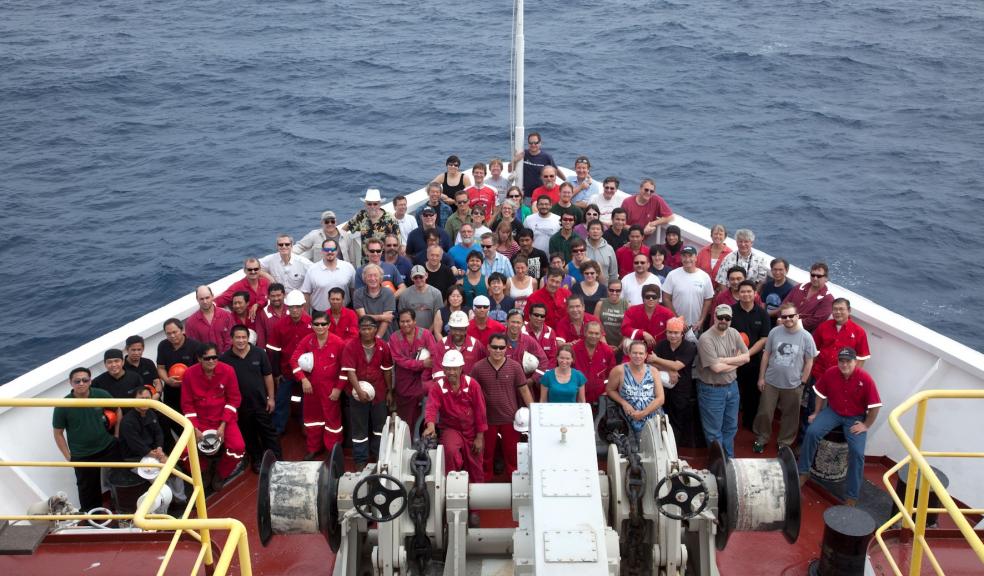
Rare samples help piece together the formation of the Earth's oceanic crust
A study by a group of International researchers into the first significant samples of primitive igneous rocks to be taken from deep within the oceanic crust is helping to solve one of geology’s greatest puzzles.
Professor Antony Morris from Plymouth University’s School of Geography, Earth and Environmental Sciences is part of the team of researchers analysing samples of rock that formed nearly four kilometres deep within the Earth’s crust, in a bid to understand how magma from the Earth’s mantle forms new ocean crust in the deep sea.
The newly recovered, priceless samples are made up of a form of crystalline igneous rock known as layered gabbro. Typically such gabbros are buried beneath a thick layer of sediment and other rocks, making them nearly impossible to access.
Until now one of the best opportunities to study the deepest gabbros was in ophiolites – ancient sections of ocean crust that have been tectonically thrust up on land – but it is difficult to establish the precise origin of ophiolites, making it hard to draw conclusions about the formation of crust in today’s oceans.
Professor Morris was aboard research drillship the JOIDES Resolution when the samples were collected from a large tear in the oceanic crust known as the Hess Deep Rift.
Located about 1000km west of the Galapagos islands in the Pacific Ocean, the Hess Deep Rift exposes rocks of the lower crust on challengingly steep slopes more than 4800 metres below sea level.
Professor Morris said: “The scientific community has waited decades for samples like these to be collected from the oceans, so that they can be used to test models for how two-thirds of the Earth’s crust forms.
“Drilling at Hess Deep tested the very limits of the technology of scientific research drilling; even starting a drill hole in such deep water on rubble covered slopes was a major achievement.”
Professor Kathryn Gillis from the University of Victoria in Canada, Co-Chief Scientist of the Integrated Ocean Drilling Program Expedition 345, alongside Professor Jonathan Snow from the University of Houston USA, said: “By finding these layers in modern ocean crust we have confirmed predictions and refined our hypotheses about how the lower crust forms.
“With this information, we should be able to assess the role that layered gabbros play in building the crust, as well as in broader global geochemical cycles.”
Professor Morris added: “Shipboard analyses show that these cores provide the last missing piece in our suite of samples from the oceanic crust.”
The findings were first published in the December 1 Advance Online Publication of the journal Nature, and appeared in the print edition on Thursday 9 January.











